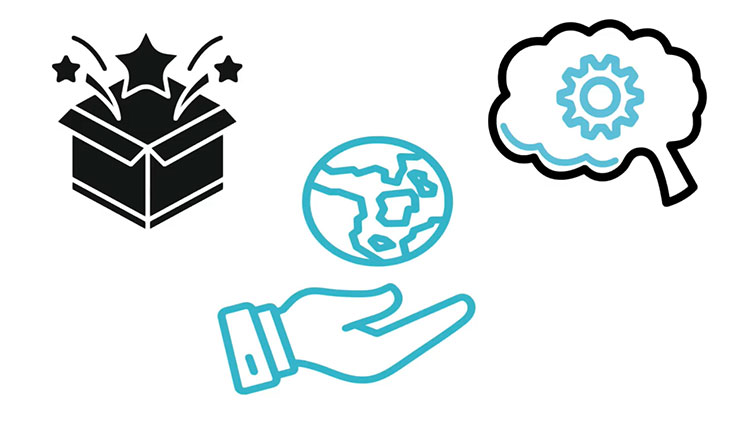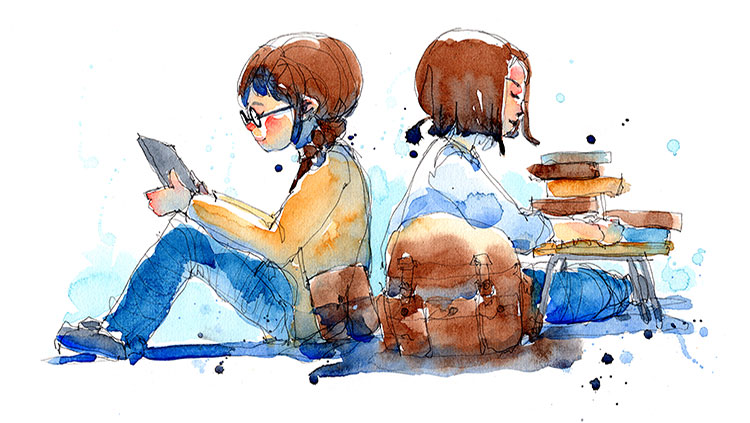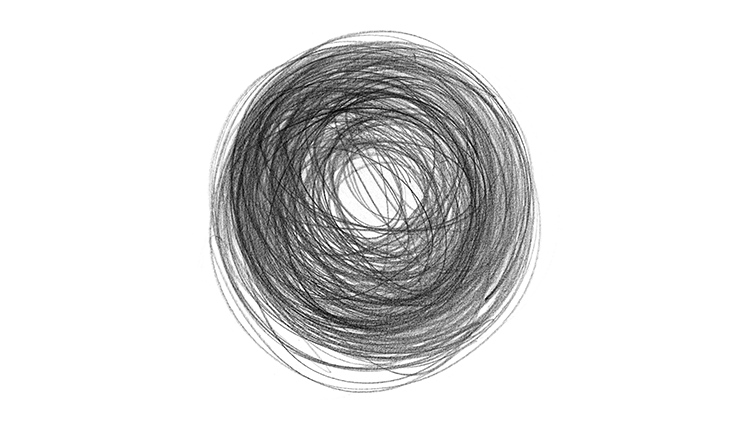Scientists Explore Why Some People Can’t Imagine Sounds
- Published21 May 2025
- Author Robin Tricoles
- Source BrainFacts/SfN

Although he plays one, Sang Hyun Kim can’t imagine the sound of a trumpet. He can’t imagine any sounds at all, like the honk of a car horn or a dog’s bark. Kim, 25, is a doctoral candidate at the University of Auckland in New Zealand. He was surprised to discover he experiences anauralia — the absence of internal auditory imagery.
During his late teens, he read a social media post stating, “Some people have an internal narrative and some don’t.” Oddly, those who experience anauralia may not know it.
“I was like, ‘What is this about? What the heck?’,” says Kim, who studies mathematics education. “I didn’t realize at the time it was the inability to recreate and to hear sounds internally.”
A decade ago, British neurologist Adam Zeman coined the term “aphantasia” to describe those who cannot imagine images. Since then, research into aphantasia has sparked interest in anauralia. Research is scarce, but recently more scientists are studying how anauralia affects memory, learning, reading, and problem-solving.
Anthony Lambert, a cognitive psychologist at the University of Auckland, recalls discussing aphantasia at a graduate student seminar. The conversation turned to how auditory imagery differs from person to person.
“We thought, well, what about auditory imagery?” recalls Lambert. “Surely that's important, as well.”
Lambert later coined the term “anauralia” to describe people’s inability to imagine voices, sounds, and music. Anauralia, he says, can be divided into two categories: imagining hearing sounds and imagining making sounds. Imagining hearing sounds captures the idea of the “mind’s ear,” whereas imagining making sounds — especially speech — captures the idea of the “inner voice.”
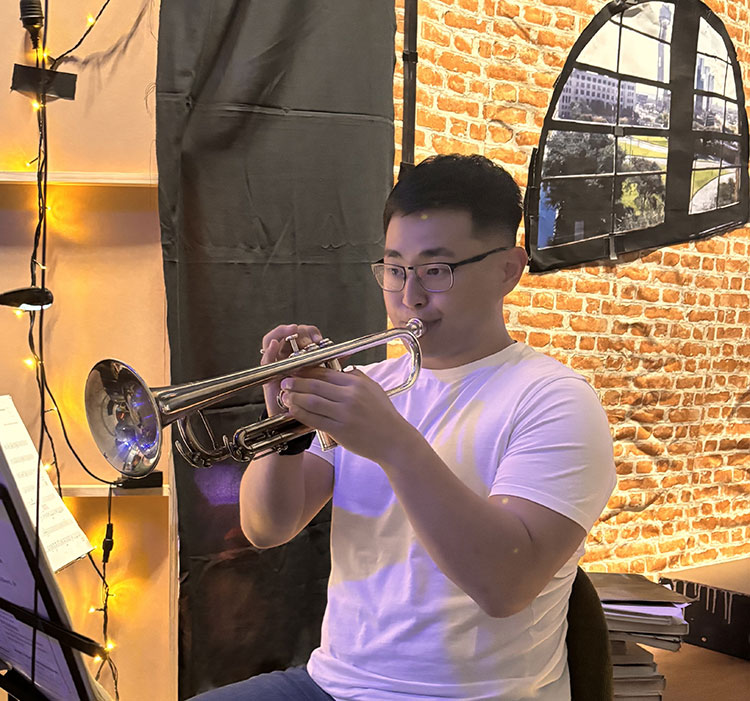
Anauralia isn’t all or nothing. It can range from weak auditory imagery to none. Recent research indicates an estimated 1% of people do not experience a mind’s ear, whereas between 5 to 10% of don’t have an inner voice. The 1% figure is based on a survey carried out with the New Zealand Attitudes and Values Study. Researchers asked 32,000 New Zealanders to describe the vividness and clarity of their auditory and visual imagery. Scientists presented the unpublished results of the survey in 2023 at The Science of Consciousness Conference in Italy.
Lambert and psychologist Rish Hinwar researched the link between anauralia and aphantasia. The study found 34 of 128 self-selected participants experienced aphantasia, and 29 were categorized as anauralic. Most of the participants categorized as aphantasic also reported weak or no auditory imaging, and those categorized as anauralic were likely to be categorized as aphantasic.
Kim describes his anauralia as “a deafening silence.”
“It’s like constant nothingness,” he says. “Nothingness in the sense that it's quiet.”
If Kim wants to think something over, he voices his thoughts. “When I’m driving or when I’m home alone, I’ll talk to myself,” he says. “Sometimes I've got to get it out. I've got to be whispering it and feel my vocal cords become active. It's not happening up here,” Kim says, gesturing toward his head.
But University of Auckland graduate student Zoé Schelp knows something is happening up there. She’s working with Lambert to figure out what that something is. But it’s challenging work. “Because people seem to function normally when they experience anauralia, it can be difficult to find them,” she says.
Can You Imagine?
Jessie Donaldson, an occupational therapist in Auckland, first learned she experiences aphantasia when she was in her mid-30s. She saw a meme on Facebook asking what people saw in their mind’s eye. Then, Donaldson, now 37, says she realized she saw “pretty much nothing.”
A few years later, her husband, who knew about Schelp's study on anauralia, urged her to connect. Unlike some with anauralia, Donaldson says she can hear her thoughts but can't imagine sounds or someone else’s voice speaking to her, even her husband’s.
“I know what a dog sounds like, but I couldn’t imagine it in my head,” she says.
Likewise, Donaldson can't imagine detailed images or scenes, but she can remember certain events. "I have a memory of a moment, but it's not really vivid," she says. "It's like it's dull and gray. But I can remember things quite well.”
Despite this, Donaldson doesn’t believe anauralia or aphantasia has affected her ability to learn, solve problems, or enjoy activities. For instance, she says she loves to read even though the words on the page are not accompanied by sounds or imagery.
Schelp is now conducting preliminary research on people who experience normal auditory imagery, a normal inner voice, and those who don't experience auditory imagery. They complete one of four tasks while wearing a cap that records their brain’s electrical activity from the surface of their scalp: listening to a sound, imagining hearing the sound, imagining making the sound, or doing nothing. They later complete the same tasks while undergoing magnetic resonance imaging (MRI).
“You try to work out which parts of the brain are being most active during those tasks,” explains Lambert. “fMRI gives you quite a good idea of which brain areas are more active under some conditions compared to others.” The researchers suspect that when a participant hears a sound and imagines hearing a sound, the auditory cortex and temporal lobe will become active.
Psychologist Andrea Halpern, who studies cognitive psychology and neuroscience at Bucknell University in Pennsylvania, says her research has pinpointed activity in the secondary auditory cortex when study participants imagine a sound. She has also seen activity in the brain’s supplementary motor area, which is associated with planning movements and other sequences.
Lambert anticipates seeing differences in activation in the frontal lobes, where consciousness is regulated. For those who experience anauralia, an inner voice may not rise above the subconscious level, so they might not be aware of the mental representations which produce the conscious experiences of an inner voice in others.
There's lots of stuff we do without being aware of it, and perhaps the dividing line between conscious and unconscious mental processes is set in a somewhat different place for people who experience anauralia and aphantasia, says Lambert.
No matter the underpinnings of anauralia, people who experience it can be accomplished academically and creatively. Kim has been playing music since he was 10. “It never hindered my progress,” he says. “I still consider myself to be a fairly decent musician.”
His teacher had urged him to “hear the music before you play it.” Kim thought this request was simply a figure of speech. But his teacher was referring to musical audiation, mentally rehearsing music in one’s mind to figure out how the music should sound.
“That was something I could not relate to at all, and I still can't,” said Kim. “So, if I need to do it, I will hum it before I play.”
Kim says he can’t visualize images, even simple ones, either. “I can't see anything,” he says. When he tries, he says it’s like seeing with one’s eyes closed.
“It isn't necessarily bad because that's all I've ever known,” says Kim.
CONTENT PROVIDED BY
BrainFacts/SfN
References
Monzel, M., Mitchell, D., Macpherson, F., Pearson, J., & Zeman, A. (2022). Aphantasia, dysikonesia, anauralia: call for a single term for the lack of mental imagery – Commentary on Dance et al. (2021) and Hinwar and Lambert (2021). Cortex, 150. https://doi.org/10.1016/j.cortex.2022.02.002
Johanne, & Lupyan, G. (2024). Not Everybody Has an Inner Voice: Behavioral Consequences of Anendophasia. Psychological Science, 35(7). https://doi.org/10.1177/09567976241243004
Hinwar, R. P., & Lambert, A. J. (2021). Anauralia: The Silent Mind and Its Association With Aphantasia. Frontiers in Psychology, 12. https://doi.org/10.3389/fpsyg.2021.744213
Zatorre, R. J., & Halpern, A. R. (2005). Mental Concerts: Musical Imagery and Auditory Cortex. Neuron, 47(1), 9–12. https://doi.org/10.1016/j.neuron.2005.06.013
What to Read Next
Also In Thinking & Awareness
Trending
Popular articles on BrainFacts.org


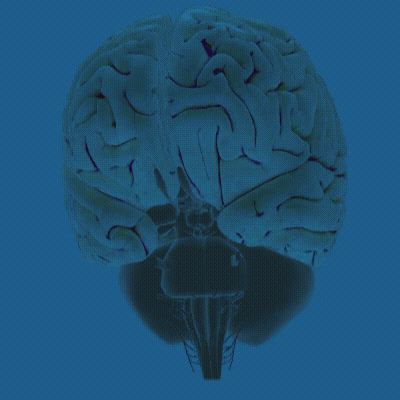

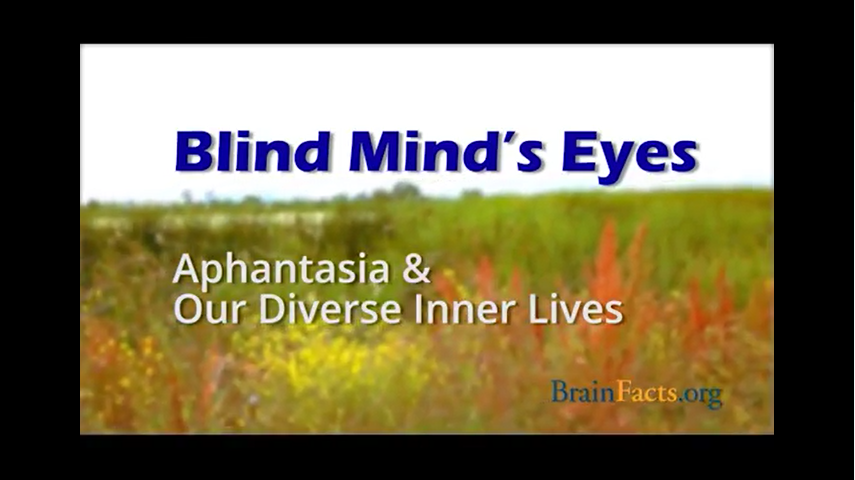

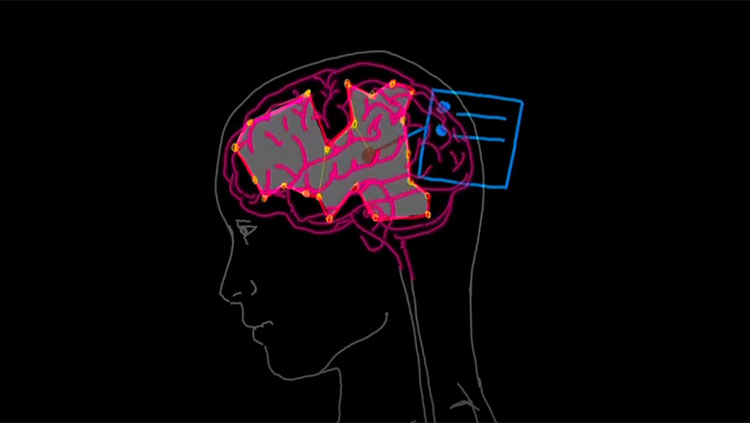

.jpg)
